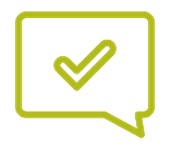Getting Started with the PPI
Before you start using the PPI, it’s best to ask yourself how you intend to use the data that you’ll collect from PPI surveys. Making this determination right at the start will help you focus on actionable insights as you analyze the data. Below, under "How Do You Want to Use the PPI?" you can find three ways you can use the PPI.
Country-specific PPIs can be downloaded from this website at no cost. First, sign in or create an account. By creating an account, you will be able to participate in the online discussion forum, receive important PPI updates, and access all of your downloads in one place.
Next, visit our PPI by Country page to download the PPI for your country of interest. To view a list of PPIs in development, click here.
Each country page contains several documents available for download (log-in required), including a design memo with a detailed technical description of the PPI design and construction. Each country also has a scorecard (either within the design memo or as a separate document) listing the country-specific set of PPI indicators and corresponding lookup tables used to generate poverty likelihoods and rates.
Organizations that decide to use the PPI usually make a small, up-front investment in training before they integrate the tool into their operations. The training period teaches the organization how to accurately sample its client base if it will not conduct a census, how to administer the survey properly, why survey questions should not be altered, how to use results to calculate poverty outreach, and other important principles. The PPI provides instructional and online resources for users:
- Our Learning Materials explain how to properly undergo the stages of the PPI implementation cycle, including how to abide by the Standards of Use.
- Our Case Studies illustrate how various organizations, with different business models, have used PPI data to assess performance and make informed decisions.
- This blog post shares nine tips to improve your PPI use.
Still have questions? Search the PPI community forum, read our Frequently Asked Questions (FAQs), or contact us.
How do you want to use the PPI?
Here you can find three different ways in which you can use the PPI, depending on your organization's main goals.
Measure Poverty Outreach
An organization’s “poverty outreach” represents how well it is reaching the poor. The PPI is designed to be simple and data can be collected easily via pen and paper. Data can also be collected via the numerous automated or mobile-based data collection tools that have become available in recent years.
Once a PPI survey has been completed for a household, the poverty likelihood of that household can be calculated by summing the score [between 0 and 100] and using the Look-Up Table to convert the score to a poverty likelihood [%] related to a poverty line [e.g., national poverty line or $1.90/day]. Once individual household poverty likelihoods have been calculated, organizations can average these poverty likelihoods for the group of clients surveyed to determine the poverty rate of their portfolio, or the percentage of their clients who live below a specific poverty line. This is the organization’s “poverty outreach.”
Improve Social Performance
Once an organization has collected and analyzed PPI data, the next step is to act upon it. An organization may, for example, analyze its PPI data and determine that it needs to enhance its outreach to the poor. It can use the PPI as a quick, efficient screening tool to target clients based on their likelihood of being poor. Client selection can be based on PPI data alone or on a combination of criteria as part of a more complex screening process. Our Guide to Targeting with the PPI explores different methods of using the PPI to target clients, discusses recommended targeting practices, and describes limitations to consider.
One size does not fit all when it comes to serving poor clients. Organizations can use PPI data to develop new products and services or redesign existing ones to better serve the needs of specific groups of poor clients. Using PPI data in conjunction with other information such as demographics, past usage patterns, and behaviors can help organizations improve product offerings for specific client segments.
Conducting a segmentation analysis involves dividing an organization's target market or its existing clients into groups that have common needs, behaviors, or other characteristics. Client segmentation allows organizations to design and implement segment-specific strategies that more appropriately and effectively serve these groups. The PPI Guide to Segmentation is a comprehensive resource that includes an overview of common use cases for segmentation, a breakdown of the three main methods for grouping segments based on the PPI, and illustrations from hypothetical examples.
Track Progress Out of Poverty
Organizations value knowledge of changes in the poverty level of their beneficiaries over time. Assessing changes in poverty levels can guide institutional policy to improve targeting, deepen poverty outreach, and determine appropriate interventions for different client segments.
In order to track changes in poverty levels over time, organizations must administer the PPI to either the same group of households or two equally representative samples of households at regular intervals. If an individual household’s poverty likelihood changes, the organization can infer that the household’s economic standing has changed.
Please keep in mind that PPI data on its own does not help understand causality. Any measured reduction in poverty levels using the PPI cannot automatically be inferred to be a result of services offered by the organization.




